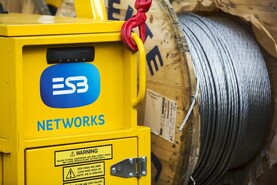Targets for a de-carbonised electricity industry face challenges aside from cost. The first is the likely sharp increase in demand.
Governments around Europe are planning to shift the road vehicle fleet towards electric propulsion, initially through persuading new car purchasers to go electric and ultimately converting heavier vehicles like buses and trucks. They are also seeking to eliminate oil and ultimately gas from the space heating market, including residential central heating, replacing it with heat pumps and other technologies which will rely on low-carbon electricity.
The big Moneypoint coal-fired station is due to close and the peat-fired units have already done so
In Ireland, a third boost to electricity demand will come from the willingness to accommodate large numbers of power-hungry data centres. These use electricity as the main operating ingredient, and the implication is that Ireland is becoming a major exporter of electricity, embodied in the services which data centres provide. Whether Ireland enjoys a comparative advantage in the production and export of electricity has not been established as the data centre rollout continues apace.
There will be substantial costs in building the new wind and solar generating capacity, and the figures are scary – according to the Government’s 2019 Climate Action Plan, total installed generating capacity could more than double.
Weather-dependent power can deliver electricity at low operating cost
The big Moneypoint coal-fired station is due to close and the peat-fired units have already done so. Between the replacement of these stations and the huge requirement of onshore and offshore wind, as well as solar, the total requirement for new generating capacity over the next decade or two exceeds the total of installed capacity in the system at present.
The new system cannot all be renewable. Weather-dependent power can deliver electricity at low operating cost since the wind just blows and the sun is a great big nuclear fusion reactor which powers solar farms for free.
Intermittent
But these technologies do not deliver round-the-clock power – they are intermittent and cannot be relied upon without backup.
Availability for wind units is around 30% and is unpredictable. Solar units may do a little better but not when it is dark, or cloudy.
There will have to be backup generation capable of near-instant despatch to fill the gaps and keep the lights on.
Since battery storage at scale is terribly expensive, this points to a continuing role for gas-fired stations which can ramp up quickly when the renewables are not available.
There are new nuclear technologies in development which could eventually offer cheap baseload power with low life-cycle emissions
Electricity generation will never be entirely free of reliance on fossil fuels, at least not with current technology.
Nuclear stations could eventually become a low-carbon option for Ireland, although capital costs look daunting. But they do not offer rapid ramp-up and are not as natural a complement for renewables as gas. There are new nuclear technologies in development which could eventually offer cheap baseload power with low life-cycle emissions.
Operating a power system with a lot of renewables will require heavy transmission investment as well as billions for the new generation units.
Pylons
Ireland’s existing high-voltage grid is not suited to a world of widely dispersed wind and solar farms. New lines will have to be built and there is widespread opposition around the country to pylons.
The most vigorous opponents include people committed to the green agenda, willing the end but not the means.
The transition has yet to be thoroughly costed, and electricity in Ireland is already expensive by European standards.
Perils of transition
The recent blackouts in California illustrate the perils of transition. The Golden State has been an enthusiastic adopter of renewables and California has a big endowment of wind and solar, delivering one-third of the overall load on average.
But the backup has not been managed competently and solar works well only until the sun goes down.
The recent heatwave has spurred power demand for air conditioning. The sun sets every day, and sets before the demand for power begins to slacken.
The last nuclear plant in the state, at Diablo Canyon, will close in 2024
Arrangements to import power from neighbouring states have gone askew – interconnection with neighbouring systems is important if you move to an ambitious reliance on interruptible sources like wind and solar.
California has also been quick on the draw in closing nuclear units before the end of their useful lives, typically longer than the lives of combustion plants that use coal, oil, or natural gas.
The last nuclear plant in the state, at Diablo Canyon, will close in 2024.
These plants, already built and paid for, produce baseload power round-the-clock at modest operating cost and with essentially no emissions.
Where they have been operating safely, early closure looks like misguided virtue-signalling and is opposed by many environmentalists.
Building brand-new nuclear plants is a different issue.
Premature closure
Plants have also been closed prematurely in Germany, most recently at Phillipsburg in the Black Forest. The immediate impact of premature nuclear closures in California has been pressure on supply and partial responsibility for blackouts.
In Germany, it has been higher emissions for reprieved coal plants.






 This is a subscriber-only article
This is a subscriber-only article










SHARING OPTIONS: